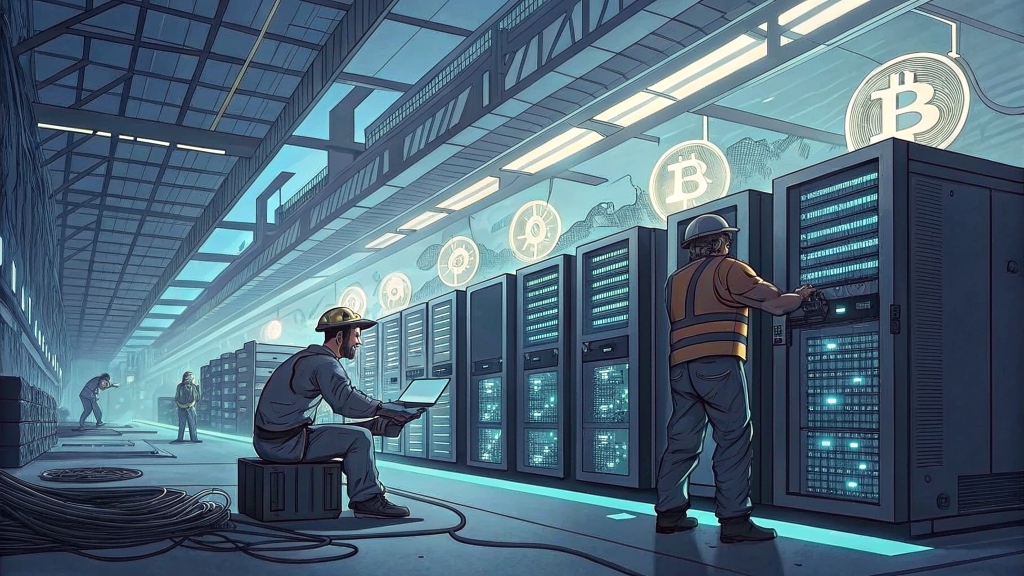
Industry Faces Challenges but Shows Resilience and Adaptation
The U.S. Bitcoin mining sector, already navigating a landscape of regulatory scrutiny and rising operational costs, is now bracing for another significant challenge: proposed tariffs on imported mining equipment. These new measures, aimed at protecting domestic manufacturing and addressing national security concerns, could have far-reaching consequences for the profitability and competitiveness of American miners. Yet, as history has shown, the industry’s adaptability and innovative spirit may prove decisive in weathering this latest storm.
Understanding the Proposed Tariffs
Recent policy proposals from Washington have put a spotlight on the importation of specialized mining hardware, such as ASIC miners and high-performance GPUs, which are essential for Bitcoin mining operations. The majority of this equipment is manufactured overseas, particularly in China and Southeast Asia, making U.S. miners highly dependent on foreign supply chains.
The rationale behind the proposed tariffs is twofold: to encourage domestic production of advanced technology and to reduce reliance on foreign suppliers for critical infrastructure. While these goals align with broader economic and security strategies, they present immediate challenges for crypto miners, who operate in a fiercely competitive global market where margins are often razor-thin.
Cost Implications for Bitcoin Mining Operations
The most direct impact of the proposed tariffs would be a significant increase in the cost of mining equipment. For many U.S. miners, the price of importing ASICs and GPUs could rise by 10% to 25%, depending on the final tariff rates. This increase could squeeze profit margins, particularly for smaller operations that lack the scale to negotiate bulk discounts or absorb higher upfront costs.
Large-scale mining firms may be better positioned to weather the storm, leveraging their capital reserves and established supplier relationships. However, even these players face the prospect of reduced return on investment and longer payback periods for new hardware. The timing is especially challenging, as the Bitcoin network’s recent halving event has already reduced block rewards, making efficiency and cost control more critical than ever.
Smaller, independent miners could be disproportionately affected. Many rely on purchasing secondhand or refurbished equipment from overseas markets, where price sensitivity is paramount. For these operators, higher equipment costs could make continued participation in the network unsustainable, potentially leading to industry consolidation as less competitive miners exit the market.
Industry Adaptation and Innovation
Despite the headwinds, the U.S. Bitcoin mining industry has a track record of resilience and adaptability. In response to the proposed tariffs, miners are exploring a range of strategies to mitigate the impact and maintain their competitive edge.
One key adaptation is the diversification of supply chains. Miners are seeking alternative suppliers in regions not subject to tariffs, such as Eastern Europe or South America. Some are even considering direct investment in domestic manufacturing of mining hardware, either through partnerships with U.S.-based tech firms or by supporting startups focused on ASIC and GPU production.
Another area of focus is operational efficiency. As hardware costs rise, miners are doubling down on energy optimization, deploying advanced cooling systems, and leveraging renewable energy sources to reduce electricity expenses—the largest ongoing cost for most operations. Some are investing in AI-driven management tools to maximize hash rate performance and minimize downtime.
Innovation is also playing a role. The industry is witnessing experimentation with alternative hardware architectures, such as FPGA-based mining and liquid immersion cooling, which promise greater efficiency and longevity for mining rigs. Collaboration between mining firms, research institutions, and technology providers is accelerating the development of new solutions tailored to the unique challenges posed by tariffs and supply chain disruptions.
Regulatory and Market Context
The proposed tariffs are unfolding against a backdrop of increased regulatory scrutiny of the cryptocurrency sector. Environmental concerns, particularly around the energy consumption of proof-of-work mining, have prompted calls for stricter oversight and reporting requirements. At the same time, market volatility and the evolving legal status of digital assets are forcing miners to remain agile and compliant.
For U.S. miners, the intersection of tariffs, regulation, and market dynamics creates a complex operating environment. Navigating these challenges requires not only technical expertise but also strategic foresight and a willingness to adapt business models as conditions evolve.
Industry associations and advocacy groups are actively engaging with policymakers to ensure that the voices of miners are heard in the debate over tariffs and regulation. They argue that a balanced approach is needed—one that supports domestic innovation and security without undermining the competitiveness of the U.S. crypto sector on the global stage.
The Future of U.S. Bitcoin Mining
Despite the uncertainties, there are reasons for optimism about the future of Bitcoin mining in the United States. The country remains a global leader in hash rate, thanks in part to its abundant energy resources, robust infrastructure, and vibrant entrepreneurial ecosystem. The challenges posed by tariffs and regulation may serve as catalysts for further innovation, driving the industry toward greater efficiency, sustainability, and self-reliance.
Some analysts predict that the push for domestic manufacturing could eventually lower costs and create new jobs, strengthening the long-term viability of U.S.-based mining. Others believe that ongoing investment in renewable energy and advanced technology will help American miners maintain their edge, even as the competitive landscape shifts.
What is clear is that the U.S. Bitcoin mining industry is entering a new phase—one defined by both challenges and opportunities. The proposed tariffs, while disruptive in the short term, may ultimately spur the kind of innovation and adaptation that has long characterized the sector. As miners, policymakers, and technology providers work together to navigate this evolving landscape, the resilience and ingenuity of the crypto community will be put to the test.
The coming months will reveal how effectively U.S. miners can adapt to higher equipment costs, regulatory pressures, and shifting market dynamics. For now, the industry’s response offers a powerful reminder: in the world of Bitcoin mining, change is the only constant, and those who adapt fastest are best positioned to thrive.

















